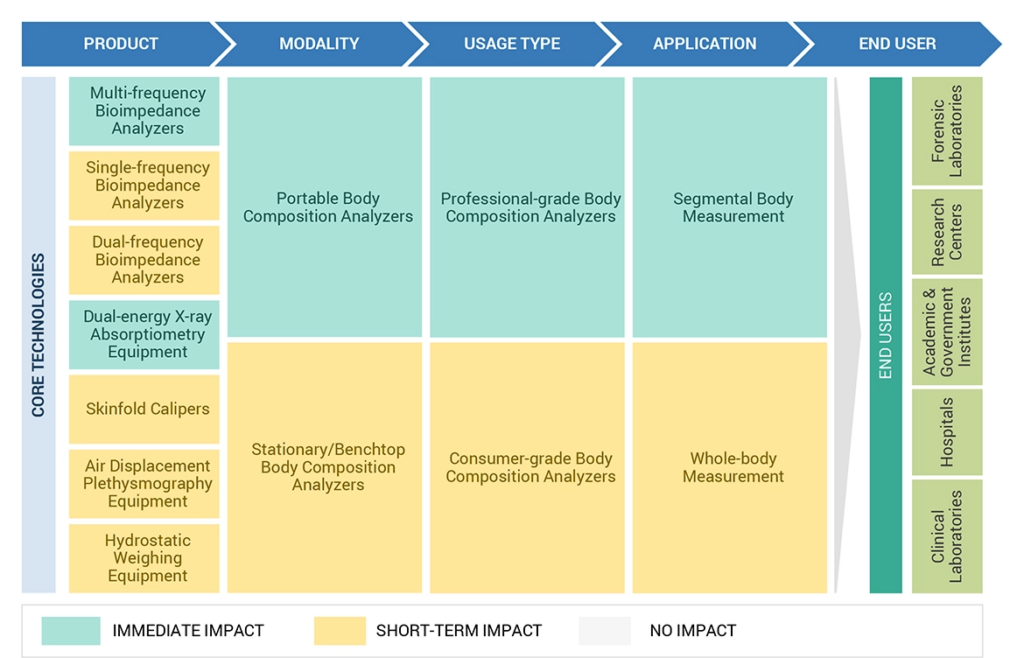The Body Composition Analyzers Market is experiencing significant growth, driven by rising health consciousness and technological advancements. Valued at approximately $0.8 billion in 2024, it is projected to reach $1.2 billion by 2029, with a Compound Annual Growth Rate (CAGR) of 9.3% during this period.

Key Competitors and Market Landscape
The market is highly competitive, featuring several prominent players:
- Bodystat Ltd
- COSMED Srl
- GE Healthcare
- Hologic Inc.
- Inbody Co. Ltd
- Omron Corporation
- RJL Systems
- Seca GmbH & Co. Kg
- SELVAS Healthcare
- Tanita Corporation
These companies are at the forefront, continually innovating to enhance their market positions through product development, strategic partnerships, and mergers and acquisitions.
Market Drivers
Several factors are propelling the growth of the body composition analyzers market:
- Increasing Obesity Rates: The global rise in obesity and related disorders has heightened the demand for precise body composition analysis to aid in effective health management.
- Growth in Fitness Industry: The proliferation of fitness clubs and wellness centers worldwide has led to increased adoption of body composition analyzers for personalized health and fitness assessments.
- Technological Advancements: Innovations such as bio-impedance analysis and dual-energy X-ray absorptiometry (DEXA) have improved the accuracy and accessibility of body composition measurements.
- Health Consciousness: A growing emphasis on preventive healthcare and personal well-being has driven individuals and healthcare providers to utilize advanced body composition tools.
Growth Opportunities
The market presents several avenues for expansion:
- Integration with Fitness Apps: Combining body composition analyzers with mobile applications offers users real-time data tracking and personalized health insights, enhancing user engagement.
- Expansion in Emerging Markets: Regions such as the Asia-Pacific are witnessing a surge in health awareness and disposable income, presenting lucrative opportunities for market penetration.
- Home Use Devices: The development of user-friendly, affordable home-use body composition analyzers caters to the growing demand for personal health monitoring solutions.
- Sports and Athletics: Professional athletes and sports teams are increasingly adopting body composition analysis to optimize performance and tailor training programs.
Challenges
Despite the positive outlook, the market faces certain challenges:
- High Costs: Advanced body composition analyzers can be expensive, limiting their adoption, especially in cost-sensitive markets.
- Availability of Alternative Methods: Traditional methods like BMI calculations and skinfold measurements are more cost-effective, which can deter the adoption of advanced analyzers.
- Limited Awareness: In developing regions, a lack of awareness about the benefits of body composition analysis hampers market growth.
Conclusion
The Body Composition Analyzers Market is poised for substantial growth, driven by increasing health awareness and technological innovations. Industry stakeholders should focus on leveraging emerging technologies, exploring new markets, and addressing existing challenges to capitalize on the opportunities this dynamic market offers.


